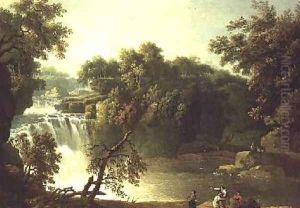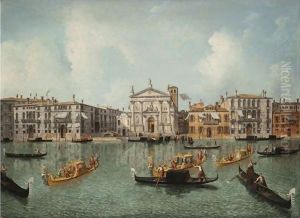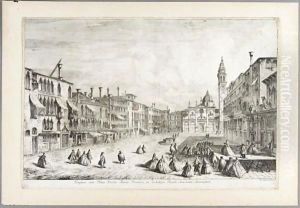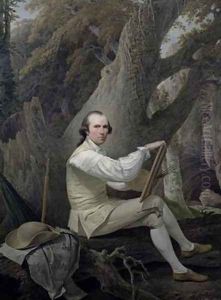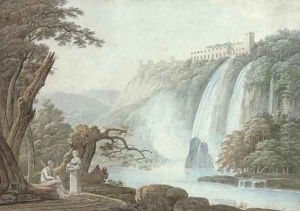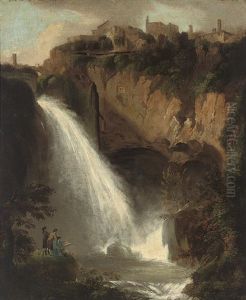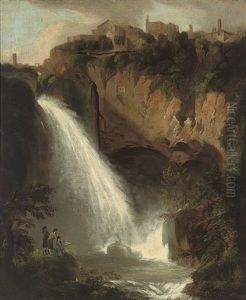Jacob More Paintings
Jacob More, often referred to as Jacob 'Morland' More, was a notable Scottish landscape painter whose work played a significant role in the development of British landscape art in the 18th century. Born in 1740 in Edinburgh, Scotland, More showed an early interest in art. He initially trained as a coach painter before shifting his focus to landscape painting, which was becoming increasingly popular during this period.
More's early work was heavily influenced by the classical landscapes of Claude Lorrain, and this influence is evident in his harmonious compositions and the serene quality of his scenes. Seeking to further his career and skill, More travelled to Italy around 1773. The Italian landscape, with its classical ruins and sunny vistas, had a profound impact on his style. He settled in Rome, where he became part of the community of British artists working there, including figures like Gavin Hamilton and Allan Ramsay.
While in Italy, More's work evolved as he began to incorporate elements of the sublime into his landscapes, a quality that would become a hallmark of Romantic landscape painting later in the century. His scenes often depicted dramatic weather and lighting conditions, imbuing them with emotional intensity and a sense of awe.
More's Italian landscapes became highly sought after by British Grand Tourists, who desired mementos of their travels. His paintings were also exhibited in London to great acclaim, enhancing his reputation in his homeland. Despite his success, More faced financial difficulties later in life, partly due to his generous hospitality and the slow payment from patrons.
Jacob More passed away in Rome in 1793, leaving behind a body of work that not only reflected his personal vision but also helped to shape the future of landscape painting in Britain and beyond. His legacy is preserved in the collections of various art institutions, including the National Galleries of Scotland and the British Museum.
